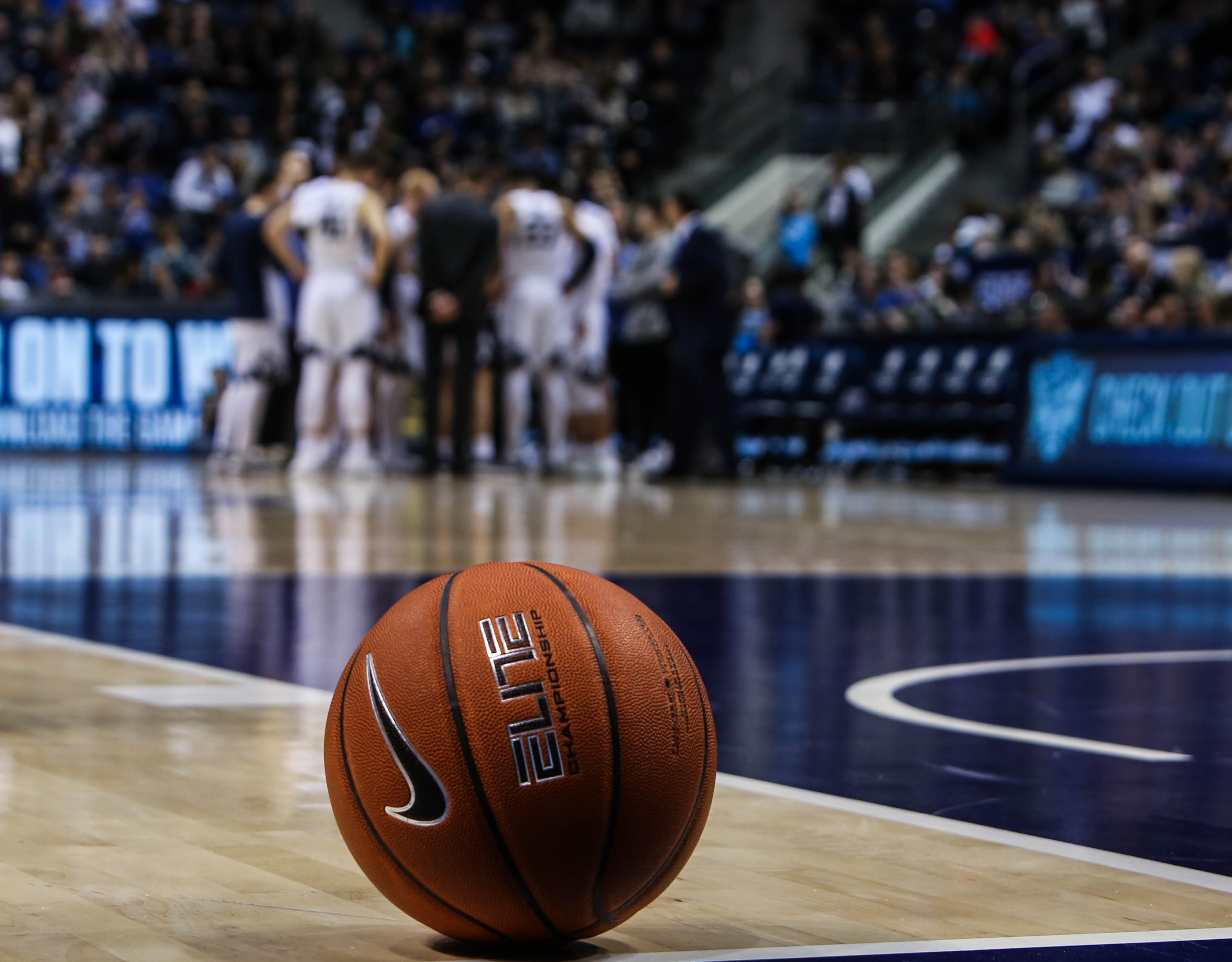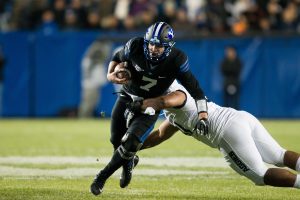
The NCAA is filled with rules and regulations that can be confusing to understand and lead to misconceptions.
A common misconception is that NCAA eligibility requirements for freshmen are the same as college admission requirements. BYU assistant compliance coordinator Brittani Nelson said just because someone is admitted to a university does not mean they are automatically eligible to play an NCAA sport at a Division I school their freshman year.
“Likewise, just because someone meets the requirements to be eligible to play an NCAA sport doesn’t mean that they will be admitted to the school of their choice,” Nelson said.
Student athletes need to be certified by the NCAA Eligibility Center to compete at any Division I school. Incoming student athletes are subject to academic initial eligibility standards including standardized test scores, the number of core courses taken in high school and the grades earned in core courses.
BYU Athletic Director Tom Holmoe addressed the admission requirements for athletes wishing to attend BYU in his media address Jan. 29.
“It’s already been lowered to admit a number of student athletes in most of our programs,” Holmoe said. “It’s an extraordinary school with great standards. I’m grateful that they give us the opportunity to bring in kids that are below a certain level.”
Athletes wishing to attend NCAA-affiliated schools must also meet university acceptance requirements. These requirements might exceed or be lower than NCAA standards.
“Getting admitted to school and being certified as eligible by the NCAA are two totally different processes with completely different standards,” Nelson said.
Each university has a compliance office, which ensures their department and university comply with NCAA rules and regulations. The office works to educate about the rules, interpret what they mean, monitor the rules and consequently report violations when necessary.
BYU assistant athletic director of compliance Chad Gwilliam oversees an office of four full-time employees, including himself, and two law students who assist them.
“We help in all components of NCAA rules including but not limited to academics, financial aid, extra benefits, playing and practice seasons (and) amateurism,” Gwilliam said.
Student athletes commit to academic achievement and the pursuit of a degree. They are required to meet yearly standards to be able to compete. These progress-toward-degree rules require athletes to advance toward graduation each year. College athletes’ progress is monitored by grades, minimum credit hours per year and degree progress.
“Most of the time when student athletes might run into problems with NCAA eligibility, it has to do with switching majors or transferring from another school and less to do with grades,” BYU compliance director Kyle Leslie said.
Starting in the 2019-20 academic year, NCAA revenue will be tied to academic achievement for Division I schools. The NCAA has always distributed funds to aid schools whose students need academic help; this is the first time the money schools receive from the NCAA will be determined by students’ academic achievement.

Division I student athletes have five calendar years in which they can play four seasons of competition. The clock begins when athletes enroll as full-time students and does not stop if students transfer, redshirt or attend school part-time. However, leaves of absence for a mission, mental health or family issues do not count toward the five-calendar years.
Many student athletes who have experienced severe injuries pursue a medical hardship waiver to preserve a season of eligibility. If the NCAA grants a medical hardship, it gives the student athlete an additional year of competition eligibility.
Student-athletes are not just on campus because of sports. For me, being a student-athlete means achieving success both in the classroom and on the court #NCAAInclusion @WSU_SAAC @wsulancers @WSU_Volleyball
— Jillian Dombroski (@DombroskiJill) October 2, 2018




